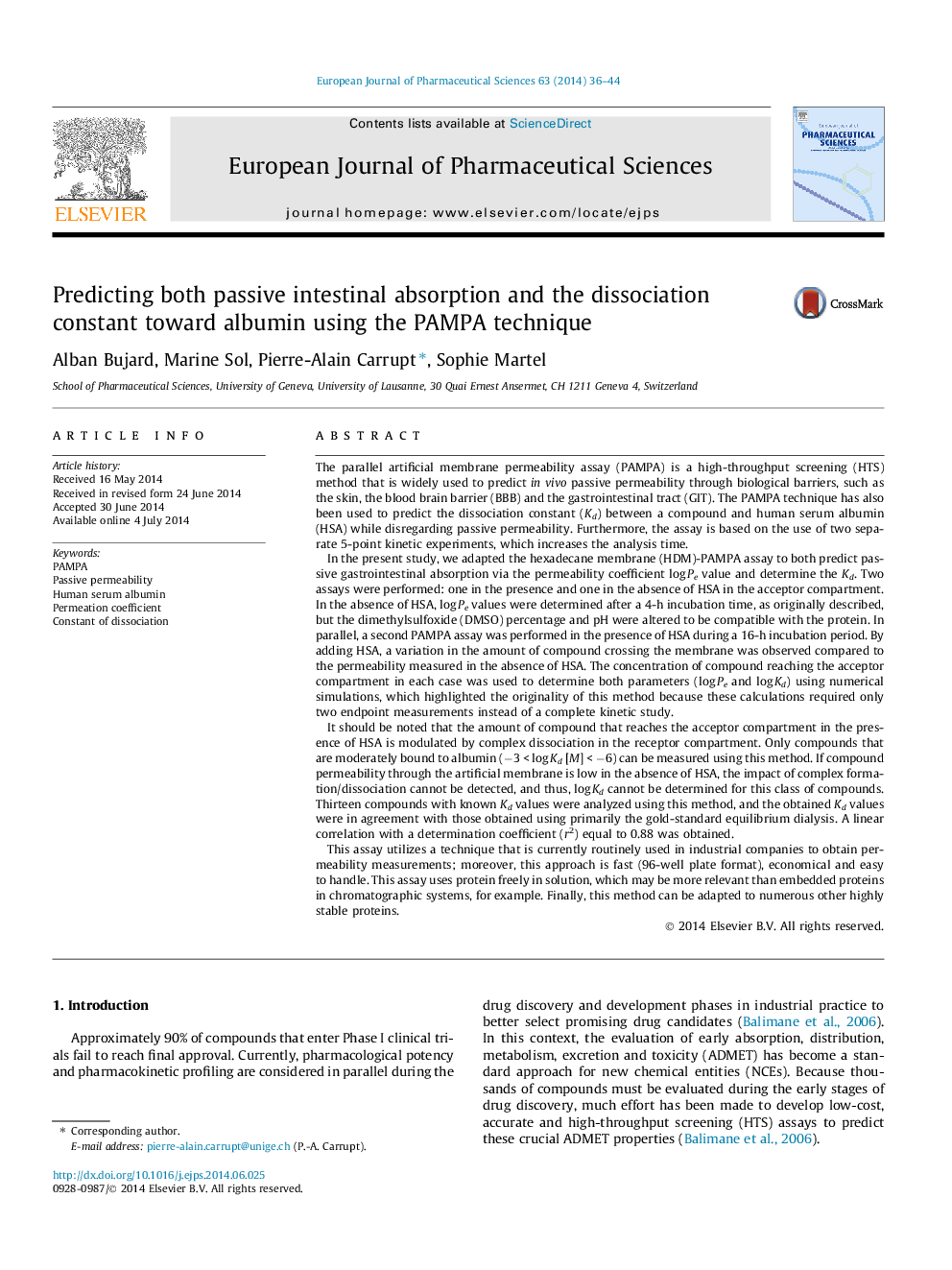| کد مقاله | کد نشریه | سال انتشار | مقاله انگلیسی | نسخه تمام متن |
|---|---|---|---|---|
| 2480481 | 1556187 | 2014 | 9 صفحه PDF | دانلود رایگان |

The parallel artificial membrane permeability assay (PAMPA) is a high-throughput screening (HTS) method that is widely used to predict in vivo passive permeability through biological barriers, such as the skin, the blood brain barrier (BBB) and the gastrointestinal tract (GIT). The PAMPA technique has also been used to predict the dissociation constant (Kd) between a compound and human serum albumin (HSA) while disregarding passive permeability. Furthermore, the assay is based on the use of two separate 5-point kinetic experiments, which increases the analysis time.In the present study, we adapted the hexadecane membrane (HDM)-PAMPA assay to both predict passive gastrointestinal absorption via the permeability coefficient log Pe value and determine the Kd. Two assays were performed: one in the presence and one in the absence of HSA in the acceptor compartment. In the absence of HSA, log Pe values were determined after a 4-h incubation time, as originally described, but the dimethylsulfoxide (DMSO) percentage and pH were altered to be compatible with the protein. In parallel, a second PAMPA assay was performed in the presence of HSA during a 16-h incubation period. By adding HSA, a variation in the amount of compound crossing the membrane was observed compared to the permeability measured in the absence of HSA. The concentration of compound reaching the acceptor compartment in each case was used to determine both parameters (log Pe and log Kd) using numerical simulations, which highlighted the originality of this method because these calculations required only two endpoint measurements instead of a complete kinetic study.It should be noted that the amount of compound that reaches the acceptor compartment in the presence of HSA is modulated by complex dissociation in the receptor compartment. Only compounds that are moderately bound to albumin (−3 < log Kd [M] < −6) can be measured using this method. If compound permeability through the artificial membrane is low in the absence of HSA, the impact of complex formation/dissociation cannot be detected, and thus, log Kd cannot be determined for this class of compounds. Thirteen compounds with known Kd values were analyzed using this method, and the obtained Kd values were in agreement with those obtained using primarily the gold-standard equilibrium dialysis. A linear correlation with a determination coefficient (r2) equal to 0.88 was obtained.This assay utilizes a technique that is currently routinely used in industrial companies to obtain permeability measurements; moreover, this approach is fast (96-well plate format), economical and easy to handle. This assay uses protein freely in solution, which may be more relevant than embedded proteins in chromatographic systems, for example. Finally, this method can be adapted to numerous other highly stable proteins.
Figure optionsDownload high-quality image (264 K)Download as PowerPoint slide
Journal: European Journal of Pharmaceutical Sciences - Volume 63, 15 October 2014, Pages 36–44